-
FACTOR ANALYSIS
-
\r\n\r\n\r\nValue chain Analysis
-
\r\n\r\n\r\nPorter's
-
Five Forces Analysis
-
\r\n\r\n\r\nBargaining Power of Suppliers
-
\r\n\r\n\r\nBargaining
-
Power of Buyers
-
\r\n\r\n\r\nThreat of New Entrants
-
\r\n\r\n\r\nThreat
-
of Substitutes
-
\r\n\r\n\r\nIntensity of Rivalry
-
\r\n\r\n\r\n\r\n\r\nCOVID-19
-
Impact Analysis
-
\r\n\r\n\r\nMarket Impact Analysis
-
\r\n\r\n\r\nRegional
-
Impact
-
\r\n\r\n\r\nOpportunity and Threat Analysis
-
\r\n\r\n\r\n\r\n\r\n\r\n\r\n
-
\r\n
-
\r\n\r\n\r\nOxygen
-
Therapy Equipment Market, BY Product Type (USD Billion)
-
\r\n\r\n\r\nOxygen
-
Concentrators
-
\r\n\r\n\r\nOxygen Cylinders
-
\r\n\r\n\r\nLiquid
-
Oxygen Systems
-
\r\n\r\n\r\nOximeters
-
\r\n\r\n\r\n\r\n\r\nOxygen
-
Therapy Equipment Market, BY Application (USD Billion)
-
\r\n\r\n\r\nRespiratory
-
Distress
-
\r\n\r\n\r\nSleep Apnea
-
\r\n\r\n\r\nChronic
-
Obstructive Pulmonary Disease
-
\r\n\r\n\r\nPulmonary Hypertension
-
\r\n\r\n\r\n\r\n\r\nOxygen
-
Therapy Equipment Market, BY End User (USD Billion)
-
\r\n\r\n\r\nHospitals
-
\r\n\r\n\r\nHome
-
Care Settings
-
\r\n\r\n\r\nAmbulatory Surgical Centers
-
\r\n\r\n\r\nLong-term
-
Care Facilities
-
\r\n\r\n\r\n\r\n\r\nOxygen Therapy
-
Equipment Market, BY Distribution Channel (USD Billion)
-
\r\n\r\n\r\nDirect
-
Sales
-
\r\n\r\n\r\nMedical Supply Distributors
-
\r\n\r\n\r\nOnline
-
Sales
-
\r\n\r\n\r\n\r\n\r\nOxygen Therapy Equipment
-
Market, BY Regional (USD Billion)
-
\r\n\r\n\r\nNorth America
-
\r\n\r\n\r\nUS
-
\r\n\r\n\r\nCanada
-
\r\n\r\n\r\n\r\n\r\nEurope
-
\r\n\r\n\r\nGermany
-
\r\n\r\n\r\nUK
-
\r\n\r\n\r\nFrance
-
\r\n\r\n\r\nRussia
-
\r\n\r\n\r\nItaly
-
\r\n\r\n\r\nSpain
-
\r\n\r\n\r\nRest
-
of Europe
-
\r\n\r\n\r\n\r\n\r\nAPAC
-
\r\n\r\n\r\nChina
-
\r\n\r\n\r\nIndia
-
\r\n\r\n\r\nJapan
-
\r\n\r\n\r\nSouth
-
Korea
-
\r\n\r\n\r\nMalaysia
-
\r\n\r\n\r\nThailand
-
\r\n\r\n\r\nIndonesia
-
\r\n\r\n\r\nRest
-
of APAC
-
\r\n\r\n\r\n\r\n\r\nSouth America
-
\r\n\r\n\r\nBrazil
-
\r\n\r\n\r\nMexico
-
\r\n\r\n\r\nArgentina
-
\r\n\r\n\r\nRest
-
of South America
-
\r\n\r\n\r\n\r\n\r\nMEA
-
\r\n\r\n\r\nGCC
-
Countries
-
\r\n\r\n\r\nSouth Africa
-
\r\n\r\n\r\nRest
-
of MEA
-
\r\n\r\n\r\n\r\n\r\n\r\n\r\n
-
\r\n
-
\r\n\r\n\r\nCompetitive
-
Landscape
-
\r\n\r\n\r\nOverview
-
\r\n\r\n\r\nCompetitive
-
Analysis
-
\r\n\r\n\r\nMarket share Analysis
-
\r\n\r\n\r\nMajor
-
Growth Strategy in the Oxygen Therapy Equipment Market
-
\r\n\r\n\r\nCompetitive
-
Benchmarking
-
\r\n\r\n\r\nLeading Players in Terms of Number of Developments
-
in the Oxygen Therapy Equipment Market
-
\r\n\r\n\r\nKey developments
-
and growth strategies
-
\r\n\r\n\r\nNew Product Launch/Service Deployment
-
\r\n\r\n\r\nMerger
-
& Acquisitions
-
\r\n\r\n\r\nJoint Ventures
-
\r\n\r\n\r\n\r\n\r\nMajor
-
Players Financial Matrix
-
\r\n\r\n\r\nSales and Operating Income
-
\r\n\r\n\r\nMajor
-
Players R&D Expenditure. 2023
-
\r\n\r\n\r\n\r\n\r\n\r\n\r\nCompany
-
Profiles
-
\r\n\r\n\r\nGCE Healthcare
-
\r\n\r\n\r\nFinancial
-
Overview
-
\r\n\r\n\r\nProducts Offered
-
\r\n\r\n\r\nKey
-
Developments
-
\r\n\r\n\r\nSWOT Analysis
-
\r\n\r\n\r\nKey
-
Strategies
-
\r\n\r\n\r\n\r\n\r\nInvacare
-
\r\n\r\n\r\nFinancial
-
Overview
-
\r\n\r\n\r\nProducts Offered
-
\r\n\r\n\r\nKey
-
Developments
-
\r\n\r\n\r\nSWOT Analysis
-
\r\n\r\n\r\nKey
-
Strategies
-
\r\n\r\n\r\n\r\n\r\nInogen
-
\r\n\r\n\r\nFinancial
-
Overview
-
\r\n\r\n\r\nProducts Offered
-
\r\n\r\n\r\nKey
-
Developments
-
\r\n\r\n\r\nSWOT Analysis
-
\r\n\r\n\r\nKey
-
Strategies
-
\r\n\r\n\r\n\r\n\r\nBD
-
\r\n\r\n\r\nFinancial
-
Overview
-
\r\n\r\n\r\nProducts Offered
-
\r\n\r\n\r\nKey
-
Developments
-
\r\n\r\n\r\nSWOT Analysis
-
\r\n\r\n\r\nKey
-
Strategies
-
\r\n\r\n\r\n\r\n\r\nAirSep
-
\r\n\r\n\r\nFinancial
-
Overview
-
\r\n\r\n\r\nProducts Offered
-
\r\n\r\n\r\nKey
-
Developments
-
\r\n\r\n\r\nSWOT Analysis
-
\r\n\r\n\r\nKey
-
Strategies
-
\r\n\r\n\r\n\r\n\r\nDrive DeVilbiss Healthcare
-
\r\n\r\n\r\nFinancial
-
Overview
-
\r\n\r\n\r\nProducts Offered
-
\r\n\r\n\r\nKey
-
Developments
-
\r\n\r\n\r\nSWOT Analysis
-
\r\n\r\n\r\nKey
-
Strategies
-
\r\n\r\n\r\n\r\n\r\nResMed
-
\r\n\r\n\r\nFinancial
-
Overview
-
\r\n\r\n\r\nProducts Offered
-
\r\n\r\n\r\nKey
-
Developments
-
\r\n\r\n\r\nSWOT Analysis
-
\r\n\r\n\r\nKey
-
Strategies
-
\r\n\r\n\r\n\r\n\r\nPhilips
-
\r\n\r\n\r\nFinancial
-
Overview
-
\r\n\r\n\r\nProducts Offered
-
\r\n\r\n\r\nKey
-
Developments
-
\r\n\r\n\r\nSWOT Analysis
-
\r\n\r\n\r\nKey
-
Strategies
-
\r\n\r\n\r\n\r\n\r\nO2 Concepts
-
\r\n\r\n\r\nFinancial
-
Overview
-
\r\n\r\n\r\nProducts Offered
-
\r\n\r\n\r\nKey
-
Developments
-
\r\n\r\n\r\nSWOT Analysis
-
\r\n\r\n\r\nKey
-
Strategies
-
\r\n\r\n\r\n\r\n\r\nChart Industries
-
\r\n\r\n\r\nFinancial
-
Overview
-
\r\n\r\n\r\nProducts Offered
-
\r\n\r\n\r\nKey
-
Developments
-
\r\n\r\n\r\nSWOT Analysis
-
\r\n\r\n\r\nKey
-
Strategies
-
\r\n\r\n\r\n\r\n\r\nCaire Inc
-
\r\n\r\n\r\nFinancial
-
Overview
-
\r\n\r\n\r\nProducts Offered
-
\r\n\r\n\r\nKey
-
Developments
-
\r\n\r\n\r\nSWOT Analysis
-
\r\n\r\n\r\nKey
-
Strategies
-
\r\n\r\n\r\n\r\n\r\nMediCabil
-
\r\n\r\n\r\nFinancial
-
Overview
-
\r\n\r\n\r\nProducts Offered
-
\r\n\r\n\r\nKey
-
Developments
-
\r\n\r\n\r\nSWOT Analysis
-
\r\n\r\n\r\nKey
-
Strategies
-
\r\n\r\n\r\n\r\n\r\nFisher and Paykel Healthcare
-
\r\n\r\n\r\nFinancial
-
Overview
-
\r\n\r\n\r\nProducts Offered
-
\r\n\r\n\r\nKey
-
Developments
-
\r\n\r\n\r\nSWOT Analysis
-
\r\n\r\n\r\nKey
-
Strategies
-
\r\n\r\n\r\n\r\n\r\nMedtronic
-
\r\n\r\n\r\nFinancial
-
Overview
-
\r\n\r\n\r\nProducts Offered
-
\r\n\r\n\r\nKey
-
Developments
-
\r\n\r\n\r\nSWOT Analysis
-
\r\n\r\n\r\nKey
-
Strategies
-
\r\n\r\n\r\n\r\n\r\nHersill
-
\r\n\r\n\r\nFinancial
-
Overview
-
\r\n\r\n\r\nProducts Offered
-
\r\n\r\n\r\nKey
-
Developments
-
\r\n\r\n\r\nSWOT Analysis
-
\r\n\r\n\r\nKey
-
Strategies
-
\r\n\r\n\r\n\r\n\r\n\r\n\r\nAppendix
-
\r\n\r\n\r\nReferences
-
\r\n\r\n\r\nRelated
-
Reports
-
\r\n\r\n\r\n\r\n\r\nLIST Of tables
-
\r\n
-
\r\n\r\n\r\nLIST
-
OF ASSUMPTIONS
-
\r\n\r\n\r\nNorth America Oxygen Therapy Equipment
-
Market SIZE ESTIMATES & FORECAST, BY PRODUCT TYPE, 2019-2035 (USD Billions)
-
\r\n\r\n\r\nNorth
-
America Oxygen Therapy Equipment Market SIZE ESTIMATES & FORECAST, BY APPLICATION,
-
\r\n\r\n\r\nNorth America Oxygen Therapy
-
Equipment Market SIZE ESTIMATES & FORECAST, BY END USER, 2019-2035 (USD Billions)
-
\r\n\r\n\r\nNorth
-
America Oxygen Therapy Equipment Market SIZE ESTIMATES & FORECAST, BY DISTRIBUTION
-
CHANNEL, 2019-2035 (USD Billions)
-
\r\n\r\n\r\nNorth America Oxygen
-
Therapy Equipment Market SIZE ESTIMATES & FORECAST, BY REGIONAL, 2019-2035 (USD
-
Billions)
-
\r\n\r\n\r\nUS Oxygen Therapy Equipment Market SIZE ESTIMATES
-
& FORECAST, BY PRODUCT TYPE, 2019-2035 (USD Billions)
-
\r\n\r\n\r\nUS
-
Oxygen Therapy Equipment Market SIZE ESTIMATES & FORECAST, BY APPLICATION, 2019-2035
-
(USD Billions)
-
\r\n\r\n\r\nUS Oxygen Therapy Equipment Market SIZE
-
ESTIMATES & FORECAST, BY END USER, 2019-2035 (USD Billions)
-
\r\n\r\n\r\nUS
-
Oxygen Therapy Equipment Market SIZE ESTIMATES & FORECAST, BY DISTRIBUTION CHANNEL,
-
\r\n\r\n\r\nUS Oxygen Therapy Equipment
-
Market SIZE ESTIMATES & FORECAST, BY REGIONAL, 2019-2035 (USD Billions)
-
\r\n\r\n\r\nCanada
-
Oxygen Therapy Equipment Market SIZE ESTIMATES & FORECAST, BY PRODUCT TYPE,
-
\r\n\r\n\r\nCanada Oxygen Therapy Equipment
-
Market SIZE ESTIMATES & FORECAST, BY APPLICATION, 2019-2035 (USD Billions)
-
\r\n\r\n\r\nCanada
-
Oxygen Therapy Equipment Market SIZE ESTIMATES & FORECAST, BY END USER, 2019-2035
-
(USD Billions)
-
\r\n\r\n\r\nCanada Oxygen Therapy Equipment Market
-
SIZE ESTIMATES & FORECAST, BY DISTRIBUTION CHANNEL, 2019-2035 (USD Billions)
-
\r\n\r\n\r\nCanada
-
Oxygen Therapy Equipment Market SIZE ESTIMATES & FORECAST, BY REGIONAL, 2019-2035
-
(USD Billions)
-
\r\n\r\n\r\nEurope Oxygen Therapy Equipment Market
-
SIZE ESTIMATES & FORECAST, BY PRODUCT TYPE, 2019-2035 (USD Billions)
-
\r\n\r\n\r\nEurope
-
Oxygen Therapy Equipment Market SIZE ESTIMATES & FORECAST, BY APPLICATION, 2019-2035
-
(USD Billions)
-
\r\n\r\n\r\nEurope Oxygen Therapy Equipment Market
-
SIZE ESTIMATES & FORECAST, BY END USER, 2019-2035 (USD Billions)
-
\r\n\r\n\r\nEurope
-
Oxygen Therapy Equipment Market SIZE ESTIMATES & FORECAST, BY DISTRIBUTION CHANNEL,
-
\r\n\r\n\r\nEurope Oxygen Therapy Equipment
-
Market SIZE ESTIMATES & FORECAST, BY REGIONAL, 2019-2035 (USD Billions)
-
\r\n\r\n\r\nGermany
-
Oxygen Therapy Equipment Market SIZE ESTIMATES & FORECAST, BY PRODUCT TYPE,
-
\r\n\r\n\r\nGermany Oxygen Therapy Equipment
-
Market SIZE ESTIMATES & FORECAST, BY APPLICATION, 2019-2035 (USD Billions)
-
\r\n\r\n\r\nGermany
-
Oxygen Therapy Equipment Market SIZE ESTIMATES & FORECAST, BY END USER, 2019-2035
-
(USD Billions)
-
\r\n\r\n\r\nGermany Oxygen Therapy Equipment Market
-
SIZE ESTIMATES & FORECAST, BY DISTRIBUTION CHANNEL, 2019-2035 (USD Billions)
-
\r\n\r\n\r\nGermany
-
Oxygen Therapy Equipment Market SIZE ESTIMATES & FORECAST, BY REGIONAL, 2019-2035
-
(USD Billions)
-
\r\n\r\n\r\nUK Oxygen Therapy Equipment Market SIZE
-
ESTIMATES & FORECAST, BY PRODUCT TYPE, 2019-2035 (USD Billions)
-
\r\n\r\n\r\nUK
-
Oxygen Therapy Equipment Market SIZE ESTIMATES & FORECAST, BY APPLICATION, 2019-2035
-
(USD Billions)
-
\r\n\r\n\r\nUK Oxygen Therapy Equipment Market SIZE
-
ESTIMATES & FORECAST, BY END USER, 2019-2035 (USD Billions)
-
\r\n\r\n\r\nUK
-
Oxygen Therapy Equipment Market SIZE ESTIMATES & FORECAST, BY DISTRIBUTION CHANNEL,
-
\r\n\r\n\r\nUK Oxygen Therapy Equipment
-
Market SIZE ESTIMATES & FORECAST, BY REGIONAL, 2019-2035 (USD Billions)
-
\r\n\r\n\r\nFrance
-
Oxygen Therapy Equipment Market SIZE ESTIMATES & FORECAST, BY PRODUCT TYPE,
-
\r\n\r\n\r\nFrance Oxygen Therapy Equipment
-
Market SIZE ESTIMATES & FORECAST, BY APPLICATION, 2019-2035 (USD Billions)
-
\r\n\r\n\r\nFrance
-
Oxygen Therapy Equipment Market SIZE ESTIMATES & FORECAST, BY END USER, 2019-2035
-
(USD Billions)
-
\r\n\r\n\r\nFrance Oxygen Therapy Equipment Market
-
SIZE ESTIMATES & FORECAST, BY DISTRIBUTION CHANNEL, 2019-2035 (USD Billions)
-
\r\n\r\n\r\nFrance
-
Oxygen Therapy Equipment Market SIZE ESTIMATES & FORECAST, BY REGIONAL, 2019-2035
-
(USD Billions)
-
\r\n\r\n\r\nRussia Oxygen Therapy Equipment Market
-
SIZE ESTIMATES & FORECAST, BY PRODUCT TYPE, 2019-2035 (USD Billions)
-
\r\n\r\n\r\nRussia
-
Oxygen Therapy Equipment Market SIZE ESTIMATES & FORECAST, BY APPLICATION, 2019-2035
-
(USD Billions)
-
\r\n\r\n\r\nRussia Oxygen Therapy Equipment Market
-
SIZE ESTIMATES & FORECAST, BY END USER, 2019-2035 (USD Billions)
-
\r\n\r\n\r\nRussia
-
Oxygen Therapy Equipment Market SIZE ESTIMATES & FORECAST, BY DISTRIBUTION CHANNEL,
-
\r\n\r\n\r\nRussia Oxygen Therapy Equipment
-
Market SIZE ESTIMATES & FORECAST, BY REGIONAL, 2019-2035 (USD Billions)
-
\r\n\r\n\r\nItaly
-
Oxygen Therapy Equipment Market SIZE ESTIMATES & FORECAST, BY PRODUCT TYPE,
-
\r\n\r\n\r\nItaly Oxygen Therapy Equipment
-
Market SIZE ESTIMATES & FORECAST, BY APPLICATION, 2019-2035 (USD Billions)
-
\r\n\r\n\r\nItaly
-
Oxygen Therapy Equipment Market SIZE ESTIMATES & FORECAST, BY END USER, 2019-2035
-
(USD Billions)
-
\r\n\r\n\r\nItaly Oxygen Therapy Equipment Market
-
SIZE ESTIMATES & FORECAST, BY DISTRIBUTION CHANNEL, 2019-2035 (USD Billions)
-
\r\n\r\n\r\nItaly
-
Oxygen Therapy Equipment Market SIZE ESTIMATES & FORECAST, BY REGIONAL, 2019-2035
-
(USD Billions)
-
\r\n\r\n\r\nSpain Oxygen Therapy Equipment Market
-
SIZE ESTIMATES & FORECAST, BY PRODUCT TYPE, 2019-2035 (USD Billions)
-
\r\n\r\n\r\nSpain
-
Oxygen Therapy Equipment Market SIZE ESTIMATES & FORECAST, BY APPLICATION, 2019-2035
-
(USD Billions)
-
\r\n\r\n\r\nSpain Oxygen Therapy Equipment Market
-
SIZE ESTIMATES & FORECAST, BY END USER, 2019-2035 (USD Billions)
-
\r\n\r\n\r\nSpain
-
Oxygen Therapy Equipment Market SIZE ESTIMATES & FORECAST, BY DISTRIBUTION CHANNEL,
-
\r\n\r\n\r\nSpain Oxygen Therapy Equipment
-
Market SIZE ESTIMATES & FORECAST, BY REGIONAL, 2019-2035 (USD Billions)
-
\r\n\r\n\r\nRest
-
of Europe Oxygen Therapy Equipment Market SIZE ESTIMATES & FORECAST, BY PRODUCT
-
TYPE, 2019-2035 (USD Billions)
-
\r\n\r\n\r\nRest of Europe Oxygen
-
Therapy Equipment Market SIZE ESTIMATES & FORECAST, BY APPLICATION, 2019-2035
-
(USD Billions)
-
\r\n\r\n\r\nRest of Europe Oxygen Therapy Equipment
-
Market SIZE ESTIMATES & FORECAST, BY END USER, 2019-2035 (USD Billions)
-
\r\n\r\n\r\nRest
-
of Europe Oxygen Therapy Equipment Market SIZE ESTIMATES & FORECAST, BY DISTRIBUTION
-
CHANNEL, 2019-2035 (USD Billions)
-
\r\n\r\n\r\nRest of Europe Oxygen
-
Therapy Equipment Market SIZE ESTIMATES & FORECAST, BY REGIONAL, 2019-2035 (USD
-
Billions)
-
\r\n\r\n\r\nAPAC Oxygen Therapy Equipment Market SIZE ESTIMATES
-
& FORECAST, BY PRODUCT TYPE, 2019-2035 (USD Billions)
-
\r\n\r\n\r\nAPAC
-
Oxygen Therapy Equipment Market SIZE ESTIMATES & FORECAST, BY APPLICATION, 2019-2035
-
(USD Billions)
-
\r\n\r\n\r\nAPAC Oxygen Therapy Equipment Market SIZE
-
ESTIMATES & FORECAST, BY END USER, 2019-2035 (USD Billions)
-
\r\n\r\n\r\nAPAC
-
Oxygen Therapy Equipment Market SIZE ESTIMATES & FORECAST, BY DISTRIBUTION CHANNEL,
-
\r\n\r\n\r\nAPAC Oxygen Therapy Equipment
-
Market SIZE ESTIMATES & FORECAST, BY REGIONAL, 2019-2035 (USD Billions)
-
\r\n\r\n\r\nChina
-
Oxygen Therapy Equipment Market SIZE ESTIMATES & FORECAST, BY PRODUCT TYPE,
-
\r\n\r\n\r\nChina Oxygen Therapy Equipment
-
Market SIZE ESTIMATES & FORECAST, BY APPLICATION, 2019-2035 (USD Billions)
-
\r\n\r\n\r\nChina
-
Oxygen Therapy Equipment Market SIZE ESTIMATES & FORECAST, BY END USER, 2019-2035
-
(USD Billions)
-
\r\n\r\n\r\nChina Oxygen Therapy Equipment Market
-
SIZE ESTIMATES & FORECAST, BY DISTRIBUTION CHANNEL, 2019-2035 (USD Billions)
-
\r\n\r\n\r\nChina
-
Oxygen Therapy Equipment Market SIZE ESTIMATES & FORECAST, BY REGIONAL, 2019-2035
-
(USD Billions)
-
\r\n\r\n\r\nIndia Oxygen Therapy Equipment Market
-
SIZE ESTIMATES & FORECAST, BY PRODUCT TYPE, 2019-2035 (USD Billions)
-
\r\n\r\n\r\nIndia
-
Oxygen Therapy Equipment Market SIZE ESTIMATES & FORECAST, BY APPLICATION, 2019-2035
-
(USD Billions)
-
\r\n\r\n\r\nIndia Oxygen Therapy Equipment Market
-
SIZE ESTIMATES & FORECAST, BY END USER, 2019-2035 (USD Billions)
-
\r\n\r\n\r\nIndia
-
Oxygen Therapy Equipment Market SIZE ESTIMATES & FORECAST, BY DISTRIBUTION CHANNEL,
-
\r\n\r\n\r\nIndia Oxygen Therapy Equipment
-
Market SIZE ESTIMATES & FORECAST, BY REGIONAL, 2019-2035 (USD Billions)
-
\r\n\r\n\r\nJapan
-
Oxygen Therapy Equipment Market SIZE ESTIMATES & FORECAST, BY PRODUCT TYPE,
-
\r\n\r\n\r\nJapan Oxygen Therapy Equipment
-
Market SIZE ESTIMATES & FORECAST, BY APPLICATION, 2019-2035 (USD Billions)
-
\r\n\r\n\r\nJapan
-
Oxygen Therapy Equipment Market SIZE ESTIMATES & FORECAST, BY END USER, 2019-2035
-
(USD Billions)
-
\r\n\r\n\r\nJapan Oxygen Therapy Equipment Market
-
SIZE ESTIMATES & FORECAST, BY DISTRIBUTION CHANNEL, 2019-2035 (USD Billions)
-
\r\n\r\n\r\nJapan
-
Oxygen Therapy Equipment Market SIZE ESTIMATES & FORECAST, BY REGIONAL, 2019-2035
-
(USD Billions)
-
\r\n\r\n\r\nSouth Korea Oxygen Therapy Equipment Market
-
SIZE ESTIMATES & FORECAST, BY PRODUCT TYPE, 2019-2035 (USD Billions)
-
\r\n\r\n\r\nSouth
-
Korea Oxygen Therapy Equipment Market SIZE ESTIMATES & FORECAST, BY APPLICATION,
-
\r\n\r\n\r\nSouth Korea Oxygen Therapy Equipment
-
Market SIZE ESTIMATES & FORECAST, BY END USER, 2019-2035 (USD Billions)
-
\r\n\r\n\r\nSouth
-
Korea Oxygen Therapy Equipment Market SIZE ESTIMATES & FORECAST, BY DISTRIBUTION
-
CHANNEL, 2019-2035 (USD Billions)
-
\r\n\r\n\r\nSouth Korea Oxygen
-
Therapy Equipment Market SIZE ESTIMATES & FORECAST, BY REGIONAL, 2019-2035 (USD
-
Billions)
-
\r\n\r\n\r\nMalaysia Oxygen Therapy Equipment Market SIZE
-
ESTIMATES & FORECAST, BY PRODUCT TYPE, 2019-2035 (USD Billions)
-
\r\n\r\n\r\nMalaysia
-
Oxygen Therapy Equipment Market SIZE ESTIMATES & FORECAST, BY APPLICATION, 2019-2035
-
(USD Billions)
-
\r\n\r\n\r\nMalaysia Oxygen Therapy Equipment Market
-
SIZE ESTIMATES & FORECAST, BY END USER, 2019-2035 (USD Billions)
-
\r\n\r\n\r\nMalaysia
-
Oxygen Therapy Equipment Market SIZE ESTIMATES & FORECAST, BY DISTRIBUTION CHANNEL,
-
\r\n\r\n\r\nMalaysia Oxygen Therapy Equipment
-
Market SIZE ESTIMATES & FORECAST, BY REGIONAL, 2019-2035 (USD Billions)
-
\r\n\r\n\r\nThailand
-
Oxygen Therapy Equipment Market SIZE ESTIMATES & FORECAST, BY PRODUCT TYPE,
-
\r\n\r\n\r\nThailand Oxygen Therapy Equipment
-
Market SIZE ESTIMATES & FORECAST, BY APPLICATION, 2019-2035 (USD Billions)
-
\r\n\r\n\r\nThailand
-
Oxygen Therapy Equipment Market SIZE ESTIMATES & FORECAST, BY END USER, 2019-2035
-
(USD Billions)
-
\r\n\r\n\r\nThailand Oxygen Therapy Equipment Market
-
SIZE ESTIMATES & FORECAST, BY DISTRIBUTION CHANNEL, 2019-2035 (USD Billions)
-
\r\n\r\n\r\nThailand
-
Oxygen Therapy Equipment Market SIZE ESTIMATES & FORECAST, BY REGIONAL, 2019-2035
-
(USD Billions)
-
\r\n\r\n\r\nIndonesia Oxygen Therapy Equipment Market
-
SIZE ESTIMATES & FORECAST, BY PRODUCT TYPE, 2019-2035 (USD Billions)
-
\r\n\r\n\r\nIndonesia
-
Oxygen Therapy Equipment Market SIZE ESTIMATES & FORECAST, BY APPLICATION, 2019-2035
-
(USD Billions)
-
\r\n\r\n\r\nIndonesia Oxygen Therapy Equipment Market
-
SIZE ESTIMATES & FORECAST, BY END USER, 2019-2035 (USD Billions)
-
\r\n\r\n\r\nIndonesia
-
Oxygen Therapy Equipment Market SIZE ESTIMATES & FORECAST, BY DISTRIBUTION CHANNEL,
-
\r\n\r\n\r\nIndonesia Oxygen Therapy Equipment
-
Market SIZE ESTIMATES & FORECAST, BY REGIONAL, 2019-2035 (USD Billions)
-
\r\n\r\n\r\nRest
-
of APAC Oxygen Therapy Equipment Market SIZE ESTIMATES & FORECAST, BY PRODUCT
-
TYPE, 2019-2035 (USD Billions)
-
\r\n\r\n\r\nRest of APAC Oxygen Therapy
-
Equipment Market SIZE ESTIMATES & FORECAST, BY APPLICATION, 2019-2035 (USD Billions)
-
\r\n\r\n\r\nRest
-
of APAC Oxygen Therapy Equipment Market SIZE ESTIMATES & FORECAST, BY END USER,
-
\r\n\r\n\r\nRest of APAC Oxygen Therapy
-
Equipment Market SIZE ESTIMATES & FORECAST, BY DISTRIBUTION CHANNEL, 2019-2035
-
(USD Billions)
-
\r\n\r\n\r\nRest of APAC Oxygen Therapy Equipment
-
Market SIZE ESTIMATES & FORECAST, BY REGIONAL, 2019-2035 (USD Billions)
-
\r\n\r\n\r\nSouth
-
America Oxygen Therapy Equipment Market SIZE ESTIMATES & FORECAST, BY PRODUCT
-
TYPE, 2019-2035 (USD Billions)
-
\r\n\r\n\r\nSouth America Oxygen Therapy
-
Equipment Market SIZE ESTIMATES & FORECAST, BY APPLICATION, 2019-2035 (USD Billions)
-
\r\n\r\n\r\nSouth
-
America Oxygen Therapy Equipment Market SIZE ESTIMATES & FORECAST, BY END USER,
-
\r\n\r\n\r\nSouth America Oxygen Therapy
-
Equipment Market SIZE ESTIMATES & FORECAST, BY DISTRIBUTION CHANNEL, 2019-2035
-
(USD Billions)
-
\r\n\r\n\r\nSouth America Oxygen Therapy Equipment
-
Market SIZE ESTIMATES & FORECAST, BY REGIONAL, 2019-2035 (USD Billions)
-
\r\n\r\n\r\nBrazil
-
Oxygen Therapy Equipment Market SIZE ESTIMATES & FORECAST, BY PRODUCT TYPE,
-
\r\n\r\n\r\nBrazil Oxygen Therapy Equipment
-
Market SIZE ESTIMATES & FORECAST, BY APPLICATION, 2019-2035 (USD Billions)
-
\r\n\r\n\r\nBrazil
-
Oxygen Therapy Equipment Market SIZE ESTIMATES & FORECAST, BY END USER, 2019-2035
-
(USD Billions)
-
\r\n\r\n\r\nBrazil Oxygen Therapy Equipment Market
-
SIZE ESTIMATES & FORECAST, BY DISTRIBUTION CHANNEL, 2019-2035 (USD Billions)
-
\r\n\r\n\r\nBrazil
-
Oxygen Therapy Equipment Market SIZE ESTIMATES & FORECAST, BY REGIONAL, 2019-2035
-
(USD Billions)
-
\r\n\r\n\r\nMexico Oxygen Therapy Equipment Market
-
SIZE ESTIMATES & FORECAST, BY PRODUCT TYPE, 2019-2035 (USD Billions)
-
\r\n\r\n\r\nMexico
-
Oxygen Therapy Equipment Market SIZE ESTIMATES & FORECAST, BY APPLICATION, 2019-2035
-
(USD Billions)
-
\r\n\r\n\r\nMexico Oxygen Therapy Equipment Market
-
SIZE ESTIMATES & FORECAST, BY END USER, 2019-2035 (USD Billions)
-
\r\n\r\n\r\nMexico
-
Oxygen Therapy Equipment Market SIZE ESTIMATES & FORECAST, BY DISTRIBUTION CHANNEL,
-
\r\n\r\n\r\nMexico Oxygen Therapy Equipment
-
Market SIZE ESTIMATES & FORECAST, BY REGIONAL, 2019-2035 (USD Billions)
-
\r\n\r\n\r\nArgentina
-
Oxygen Therapy Equipment Market SIZE ESTIMATES & FORECAST, BY PRODUCT TYPE,
-
\r\n\r\n\r\nArgentina Oxygen Therapy Equipment
-
Market SIZE ESTIMATES & FORECAST, BY APPLICATION, 2019-2035 (USD Billions)
-
\r\n\r\n\r\nArgentina
-
Oxygen Therapy Equipment Market SIZE ESTIMATES & FORECAST, BY END USER, 2019-2035
-
(USD Billions)
-
\r\n\r\n\r\nArgentina Oxygen Therapy Equipment Market
-
SIZE ESTIMATES & FORECAST, BY DISTRIBUTION CHANNEL, 2019-2035 (USD Billions)
-
\r\n\r\n\r\nArgentina
-
Oxygen Therapy Equipment Market SIZE ESTIMATES & FORECAST, BY REGIONAL, 2019-2035
-
(USD Billions)
-
\r\n\r\n\r\nRest of South America Oxygen Therapy Equipment
-
Market SIZE ESTIMATES & FORECAST, BY PRODUCT TYPE, 2019-2035 (USD Billions)
-
\r\n\r\n\r\nRest
-
of South America Oxygen Therapy Equipment Market SIZE ESTIMATES & FORECAST,
-
BY APPLICATION, 2019-2035 (USD Billions)
-
\r\n\r\n\r\nRest of South
-
America Oxygen Therapy Equipment Market SIZE ESTIMATES & FORECAST, BY END USER,
-
\r\n\r\n\r\nRest of South America Oxygen
-
Therapy Equipment Market SIZE ESTIMATES & FORECAST, BY DISTRIBUTION CHANNEL,
-
\r\n\r\n\r\nRest of South America Oxygen
-
Therapy Equipment Market SIZE ESTIMATES & FORECAST, BY REGIONAL, 2019-2035 (USD
-
Billions)
-
\r\n\r\n\r\nMEA Oxygen Therapy Equipment Market SIZE ESTIMATES
-
& FORECAST, BY PRODUCT TYPE, 2019-2035 (USD Billions)
-
\r\n\r\n\r\nMEA
-
Oxygen Therapy Equipment Market SIZE ESTIMATES & FORECAST, BY APPLICATION, 2019-2035
-
(USD Billions)
-
\r\n\r\n\r\nMEA Oxygen Therapy Equipment Market SIZE
-
ESTIMATES & FORECAST, BY END USER, 2019-2035 (USD Billions)
-
\r\n\r\n\r\nMEA
-
Oxygen Therapy Equipment Market SIZE ESTIMATES & FORECAST, BY DISTRIBUTION CHANNEL,
-
\r\n\r\n\r\nMEA Oxygen Therapy Equipment
-
Market SIZE ESTIMATES & FORECAST, BY REGIONAL, 2019-2035 (USD Billions)
-
\r\n\r\n\r\nGCC
-
Countries Oxygen Therapy Equipment Market SIZE ESTIMATES & FORECAST, BY PRODUCT
-
TYPE, 2019-2035 (USD Billions)
-
\r\n\r\n\r\nGCC Countries Oxygen Therapy
-
Equipment Market SIZE ESTIMATES & FORECAST, BY APPLICATION, 2019-2035 (USD Billions)
-
\r\n\r\n\r\nGCC
-
Countries Oxygen Therapy Equipment Market SIZE ESTIMATES & FORECAST, BY END
-
USER, 2019-2035 (USD Billions)
-
\r\n\r\n\r\nGCC Countries Oxygen Therapy
-
Equipment Market SIZE ESTIMATES & FORECAST, BY DISTRIBUTION CHANNEL, 2019-2035
-
(USD Billions)
-
\r\n\r\n\r\nGCC Countries Oxygen Therapy Equipment
-
Market SIZE ESTIMATES & FORECAST, BY REGIONAL, 2019-2035 (USD Billions)
-
\r\n\r\n\r\nSouth
-
Africa Oxygen Therapy Equipment Market SIZE ESTIMATES & FORECAST, BY PRODUCT
-
TYPE, 2019-2035 (USD Billions)
-
\r\n\r\n\r\nSouth Africa Oxygen Therapy
-
Equipment Market SIZE ESTIMATES & FORECAST, BY APPLICATION, 2019-2035 (USD Billions)
-
\r\n\r\n\r\nSouth
-
Africa Oxygen Therapy Equipment Market SIZE ESTIMATES & FORECAST, BY END USER,
-
\r\n\r\n\r\nSouth Africa Oxygen Therapy
-
Equipment Market SIZE ESTIMATES & FORECAST, BY DISTRIBUTION CHANNEL, 2019-2035
-
(USD Billions)
-
\r\n\r\n\r\nSouth Africa Oxygen Therapy Equipment
-
Market SIZE ESTIMATES & FORECAST, BY REGIONAL, 2019-2035 (USD Billions)
-
\r\n\r\n\r\nRest
-
of MEA Oxygen Therapy Equipment Market SIZE ESTIMATES & FORECAST, BY PRODUCT
-
TYPE, 2019-2035 (USD Billions)
-
\r\n\r\n\r\nRest of MEA Oxygen Therapy
-
Equipment Market SIZE ESTIMATES & FORECAST, BY APPLICATION, 2019-2035 (USD Billions)
-
\r\n\r\n\r\nRest
-
of MEA Oxygen Therapy Equipment Market SIZE ESTIMATES & FORECAST, BY END USER,
-
\r\n\r\n\r\nRest of MEA Oxygen Therapy Equipment
-
Market SIZE ESTIMATES & FORECAST, BY DISTRIBUTION CHANNEL, 2019-2035 (USD Billions)
-
\r\n\r\n\r\nRest
-
of MEA Oxygen Therapy Equipment Market SIZE ESTIMATES & FORECAST, BY REGIONAL,
-
\r\n\r\n\r\nPRODUCT LAUNCH/PRODUCT DEVELOPMENT/APPROVAL
-
\r\n\r\n\r\nACQUISITION/PARTNERSHIP
-
\r\n\r\n\r\n
-
\r\n
-
\r\n
-
\r\n
-
\r\n
-
\r\n
-
\r\n
-
\r\n
-
\r\n
-
\r\n
-
\r\n
-
\r\n
-
\r\n
-
\r\n
-
\r\n
-
\r\n
-
\r\n
-
\r\n
-
\r\n
-
\r\n
-
\r\n
-
\r\n
-
\r\n
-
\r\n
-
\r\n
-
\r\n
-
\r\n
-
\r\n
-
\r\n
-
\r\nLIST
-
Of figures
-
\r\n
-
\r\n\r\n\r\nMARKET SYNOPSIS
-
\r\n\r\n\r\nNORTH
-
AMERICA OXYGEN THERAPY EQUIPMENT MARKET ANALYSIS
-
\r\n\r\n\r\nUS OXYGEN
-
THERAPY EQUIPMENT MARKET ANALYSIS BY PRODUCT TYPE
-
\r\n\r\n\r\nUS
-
OXYGEN THERAPY EQUIPMENT MARKET ANALYSIS BY APPLICATION
-
\r\n\r\n\r\nUS
-
OXYGEN THERAPY EQUIPMENT MARKET ANALYSIS BY END USER
-
\r\n\r\n\r\nUS
-
OXYGEN THERAPY EQUIPMENT MARKET ANALYSIS BY DISTRIBUTION CHANNEL
-
\r\n\r\n\r\nUS
-
OXYGEN THERAPY EQUIPMENT MARKET ANALYSIS BY REGIONAL
-
\r\n\r\n\r\nCANADA
-
OXYGEN THERAPY EQUIPMENT MARKET ANALYSIS BY PRODUCT TYPE
-
\r\n\r\n\r\nCANADA
-
OXYGEN THERAPY EQUIPMENT MARKET ANALYSIS BY APPLICATION
-
\r\n\r\n\r\nCANADA
-
OXYGEN THERAPY EQUIPMENT MARKET ANALYSIS BY END USER
-
\r\n\r\n\r\nCANADA
-
OXYGEN THERAPY EQUIPMENT MARKET ANALYSIS BY DISTRIBUTION CHANNEL
-
\r\n\r\n\r\nCANADA
-
OXYGEN THERAPY EQUIPMENT MARKET ANALYSIS BY REGIONAL
-
\r\n\r\n\r\nEUROPE
-
OXYGEN THERAPY EQUIPMENT MARKET ANALYSIS
-
\r\n\r\n\r\nGERMANY OXYGEN
-
THERAPY EQUIPMENT MARKET ANALYSIS BY PRODUCT TYPE
-
\r\n\r\n\r\nGERMANY
-
OXYGEN THERAPY EQUIPMENT MARKET ANALYSIS BY APPLICATION
-
\r\n\r\n\r\nGERMANY
-
OXYGEN THERAPY EQUIPMENT MARKET ANALYSIS BY END USER
-
\r\n\r\n\r\nGERMANY
-
OXYGEN THERAPY EQUIPMENT MARKET ANALYSIS BY DISTRIBUTION CHANNEL
-
\r\n\r\n\r\nGERMANY
-
OXYGEN THERAPY EQUIPMENT MARKET ANALYSIS BY REGIONAL
-
\r\n\r\n\r\nUK
-
OXYGEN THERAPY EQUIPMENT MARKET ANALYSIS BY PRODUCT TYPE
-
\r\n\r\n\r\nUK
-
OXYGEN THERAPY EQUIPMENT MARKET ANALYSIS BY APPLICATION
-
\r\n\r\n\r\nUK
-
OXYGEN THERAPY EQUIPMENT MARKET ANALYSIS BY END USER
-
\r\n\r\n\r\nUK
-
OXYGEN THERAPY EQUIPMENT MARKET ANALYSIS BY DISTRIBUTION CHANNEL
-
\r\n\r\n\r\nUK
-
OXYGEN THERAPY EQUIPMENT MARKET ANALYSIS BY REGIONAL
-
\r\n\r\n\r\nFRANCE
-
OXYGEN THERAPY EQUIPMENT MARKET ANALYSIS BY PRODUCT TYPE
-
\r\n\r\n\r\nFRANCE
-
OXYGEN THERAPY EQUIPMENT MARKET ANALYSIS BY APPLICATION
-
\r\n\r\n\r\nFRANCE
-
OXYGEN THERAPY EQUIPMENT MARKET ANALYSIS BY END USER
-
\r\n\r\n\r\nFRANCE
-
OXYGEN THERAPY EQUIPMENT MARKET ANALYSIS BY DISTRIBUTION CHANNEL
-
\r\n\r\n\r\nFRANCE
-
OXYGEN THERAPY EQUIPMENT MARKET ANALYSIS BY REGIONAL
-
\r\n\r\n\r\nRUSSIA
-
OXYGEN THERAPY EQUIPMENT MARKET ANALYSIS BY PRODUCT TYPE
-
\r\n\r\n\r\nRUSSIA
-
OXYGEN THERAPY EQUIPMENT MARKET ANALYSIS BY APPLICATION
-
\r\n\r\n\r\nRUSSIA
-
OXYGEN THERAPY EQUIPMENT MARKET ANALYSIS BY END USER
-
\r\n\r\n\r\nRUSSIA
-
OXYGEN THERAPY EQUIPMENT MARKET ANALYSIS BY DISTRIBUTION CHANNEL
-
\r\n\r\n\r\nRUSSIA
-
OXYGEN THERAPY EQUIPMENT MARKET ANALYSIS BY REGIONAL
-
\r\n\r\n\r\nITALY
-
OXYGEN THERAPY EQUIPMENT MARKET ANALYSIS BY PRODUCT TYPE
-
\r\n\r\n\r\nITALY
-
OXYGEN THERAPY EQUIPMENT MARKET ANALYSIS BY APPLICATION
-
\r\n\r\n\r\nITALY
-
OXYGEN THERAPY EQUIPMENT MARKET ANALYSIS BY END USER
-
\r\n\r\n\r\nITALY
-
OXYGEN THERAPY EQUIPMENT MARKET ANALYSIS BY DISTRIBUTION CHANNEL
-
\r\n\r\n\r\nITALY
-
OXYGEN THERAPY EQUIPMENT MARKET ANALYSIS BY REGIONAL
-
\r\n\r\n\r\nSPAIN
-
OXYGEN THERAPY EQUIPMENT MARKET ANALYSIS BY PRODUCT TYPE
-
\r\n\r\n\r\nSPAIN
-
OXYGEN THERAPY EQUIPMENT MARKET ANALYSIS BY APPLICATION
-
\r\n\r\n\r\nSPAIN
-
OXYGEN THERAPY EQUIPMENT MARKET ANALYSIS BY END USER
-
\r\n\r\n\r\nSPAIN
-
OXYGEN THERAPY EQUIPMENT MARKET ANALYSIS BY DISTRIBUTION CHANNEL
-
\r\n\r\n\r\nSPAIN
-
OXYGEN THERAPY EQUIPMENT MARKET ANALYSIS BY REGIONAL
-
\r\n\r\n\r\nREST
-
OF EUROPE OXYGEN THERAPY EQUIPMENT MARKET ANALYSIS BY PRODUCT TYPE
-
\r\n\r\n\r\nREST
-
OF EUROPE OXYGEN THERAPY EQUIPMENT MARKET ANALYSIS BY APPLICATION
-
\r\n\r\n\r\nREST
-
OF EUROPE OXYGEN THERAPY EQUIPMENT MARKET ANALYSIS BY END USER
-
\r\n\r\n\r\nREST
-
OF EUROPE OXYGEN THERAPY EQUIPMENT MARKET ANALYSIS BY DISTRIBUTION CHANNEL
-
\r\n\r\n\r\nREST
-
OF EUROPE OXYGEN THERAPY EQUIPMENT MARKET ANALYSIS BY REGIONAL
-
\r\n\r\n\r\nAPAC
-
OXYGEN THERAPY EQUIPMENT MARKET ANALYSIS
-
\r\n\r\n\r\nCHINA OXYGEN
-
THERAPY EQUIPMENT MARKET ANALYSIS BY PRODUCT TYPE
-
\r\n\r\n\r\nCHINA
-
OXYGEN THERAPY EQUIPMENT MARKET ANALYSIS BY APPLICATION
-
\r\n\r\n\r\nCHINA
-
OXYGEN THERAPY EQUIPMENT MARKET ANALYSIS BY END USER
-
\r\n\r\n\r\nCHINA
-
OXYGEN THERAPY EQUIPMENT MARKET ANALYSIS BY DISTRIBUTION CHANNEL
-
\r\n\r\n\r\nCHINA
-
OXYGEN THERAPY EQUIPMENT MARKET ANALYSIS BY REGIONAL
-
\r\n\r\n\r\nINDIA
-
OXYGEN THERAPY EQUIPMENT MARKET ANALYSIS BY PRODUCT TYPE
-
\r\n\r\n\r\nINDIA
-
OXYGEN THERAPY EQUIPMENT MARKET ANALYSIS BY APPLICATION
-
\r\n\r\n\r\nINDIA
-
OXYGEN THERAPY EQUIPMENT MARKET ANALYSIS BY END USER
-
\r\n\r\n\r\nINDIA
-
OXYGEN THERAPY EQUIPMENT MARKET ANALYSIS BY DISTRIBUTION CHANNEL
-
\r\n\r\n\r\nINDIA
-
OXYGEN THERAPY EQUIPMENT MARKET ANALYSIS BY REGIONAL
-
\r\n\r\n\r\nJAPAN
-
OXYGEN THERAPY EQUIPMENT MARKET ANALYSIS BY PRODUCT TYPE
-
\r\n\r\n\r\nJAPAN
-
OXYGEN THERAPY EQUIPMENT MARKET ANALYSIS BY APPLICATION
-
\r\n\r\n\r\nJAPAN
-
OXYGEN THERAPY EQUIPMENT MARKET ANALYSIS BY END USER
-
\r\n\r\n\r\nJAPAN
-
OXYGEN THERAPY EQUIPMENT MARKET ANALYSIS BY DISTRIBUTION CHANNEL
-
\r\n\r\n\r\nJAPAN
-
OXYGEN THERAPY EQUIPMENT MARKET ANALYSIS BY REGIONAL
-
\r\n\r\n\r\nSOUTH
-
KOREA OXYGEN THERAPY EQUIPMENT MARKET ANALYSIS BY PRODUCT TYPE
-
\r\n\r\n\r\nSOUTH
-
KOREA OXYGEN THERAPY EQUIPMENT MARKET ANALYSIS BY APPLICATION
-
\r\n\r\n\r\nSOUTH
-
KOREA OXYGEN THERAPY EQUIPMENT MARKET ANALYSIS BY END USER
-
\r\n\r\n\r\nSOUTH
-
KOREA OXYGEN THERAPY EQUIPMENT MARKET ANALYSIS BY DISTRIBUTION CHANNEL
-
\r\n\r\n\r\nSOUTH
-
KOREA OXYGEN THERAPY EQUIPMENT MARKET ANALYSIS BY REGIONAL
-
\r\n\r\n\r\nMALAYSIA
-
OXYGEN THERAPY EQUIPMENT MARKET ANALYSIS BY PRODUCT TYPE
-
\r\n\r\n\r\nMALAYSIA
-
OXYGEN THERAPY EQUIPMENT MARKET ANALYSIS BY APPLICATION
-
\r\n\r\n\r\nMALAYSIA
-
OXYGEN THERAPY EQUIPMENT MARKET ANALYSIS BY END USER
-
\r\n\r\n\r\nMALAYSIA
-
OXYGEN THERAPY EQUIPMENT MARKET ANALYSIS BY DISTRIBUTION CHANNEL
-
\r\n\r\n\r\nMALAYSIA
-
OXYGEN THERAPY EQUIPMENT MARKET ANALYSIS BY REGIONAL
-
\r\n\r\n\r\nTHAILAND
-
OXYGEN THERAPY EQUIPMENT MARKET ANALYSIS BY PRODUCT TYPE
-
\r\n\r\n\r\nTHAILAND
-
OXYGEN THERAPY EQUIPMENT MARKET ANALYSIS BY APPLICATION
-
\r\n\r\n\r\nTHAILAND
-
OXYGEN THERAPY EQUIPMENT MARKET ANALYSIS BY END USER
-
\r\n\r\n\r\nTHAILAND
-
OXYGEN THERAPY EQUIPMENT MARKET ANALYSIS BY DISTRIBUTION CHANNEL
-
\r\n\r\n\r\nTHAILAND
-
OXYGEN THERAPY EQUIPMENT MARKET ANALYSIS BY REGIONAL
-
\r\n\r\n\r\nINDONESIA
-
OXYGEN THERAPY EQUIPMENT MARKET ANALYSIS BY PRODUCT TYPE
-
\r\n\r\n\r\nINDONESIA
-
OXYGEN THERAPY EQUIPMENT MARKET ANALYSIS BY APPLICATION
-
\r\n\r\n\r\nINDONESIA
-
OXYGEN THERAPY EQUIPMENT MARKET ANALYSIS BY END USER
-
\r\n\r\n\r\nINDONESIA
-
OXYGEN THERAPY EQUIPMENT MARKET ANALYSIS BY DISTRIBUTION CHANNEL
-
\r\n\r\n\r\nINDONESIA
-
OXYGEN THERAPY EQUIPMENT MARKET ANALYSIS BY REGIONAL
-
\r\n\r\n\r\nREST
-
OF APAC OXYGEN THERAPY EQUIPMENT MARKET ANALYSIS BY PRODUCT TYPE
-
\r\n\r\n\r\nREST
-
OF APAC OXYGEN THERAPY EQUIPMENT MARKET ANALYSIS BY APPLICATION
-
\r\n\r\n\r\nREST
-
OF APAC OXYGEN THERAPY EQUIPMENT MARKET ANALYSIS BY END USER
-
\r\n\r\n\r\nREST
-
OF APAC OXYGEN THERAPY EQUIPMENT MARKET ANALYSIS BY DISTRIBUTION CHANNEL
-
\r\n\r\n\r\nREST
-
OF APAC OXYGEN THERAPY EQUIPMENT MARKET ANALYSIS BY REGIONAL
-
\r\n\r\n\r\nSOUTH
-
AMERICA OXYGEN THERAPY EQUIPMENT MARKET ANALYSIS
-
\r\n\r\n\r\nBRAZIL
-
OXYGEN THERAPY EQUIPMENT MARKET ANALYSIS BY PRODUCT TYPE
-
\r\n\r\n\r\nBRAZIL
-
OXYGEN THERAPY EQUIPMENT MARKET ANALYSIS BY APPLICATION
-
\r\n\r\n\r\nBRAZIL
-
OXYGEN THERAPY EQUIPMENT MARKET ANALYSIS BY END USER
-
\r\n\r\n\r\nBRAZIL
-
OXYGEN THERAPY EQUIPMENT MARKET ANALYSIS BY DISTRIBUTION CHANNEL
-
\r\n\r\n\r\nBRAZIL
-
OXYGEN THERAPY EQUIPMENT MARKET ANALYSIS BY REGIONAL
-
\r\n\r\n\r\nMEXICO
-
OXYGEN THERAPY EQUIPMENT MARKET ANALYSIS BY PRODUCT TYPE
-
\r\n\r\n\r\nMEXICO
-
OXYGEN THERAPY EQUIPMENT MARKET ANALYSIS BY APPLICATION
-
\r\n\r\n\r\nMEXICO
-
OXYGEN THERAPY EQUIPMENT MARKET ANALYSIS BY END USER
-
\r\n\r\n\r\nMEXICO
-
OXYGEN THERAPY EQUIPMENT MARKET ANALYSIS BY DISTRIBUTION CHANNEL
-
\r\n\r\n\r\nMEXICO
-
OXYGEN THERAPY EQUIPMENT MARKET ANALYSIS BY REGIONAL
-
\r\n\r\n\r\nARGENTINA
-
OXYGEN THERAPY EQUIPMENT MARKET ANALYSIS BY PRODUCT TYPE
-
\r\n\r\n\r\nARGENTINA
-
OXYGEN THERAPY EQUIPMENT MARKET ANALYSIS BY APPLICATION
-
\r\n\r\n\r\nARGENTINA
-
OXYGEN THERAPY EQUIPMENT MARKET ANALYSIS BY END USER
-
\r\n\r\n\r\nARGENTINA
-
OXYGEN THERAPY EQUIPMENT MARKET ANALYSIS BY DISTRIBUTION CHANNEL
-
\r\n\r\n\r\nARGENTINA
-
OXYGEN THERAPY EQUIPMENT MARKET ANALYSIS BY REGIONAL
-
\r\n\r\n\r\nREST
-
OF SOUTH AMERICA OXYGEN THERAPY EQUIPMENT MARKET ANALYSIS BY PRODUCT TYPE
-
\r\n\r\n\r\nREST
-
OF SOUTH AMERICA OXYGEN THERAPY EQUIPMENT MARKET ANALYSIS BY APPLICATION
-
\r\n\r\n\r\nREST
-
OF SOUTH AMERICA OXYGEN THERAPY EQUIPMENT MARKET ANALYSIS BY END USER
-
\r\n\r\n\r\nREST
-
OF SOUTH AMERICA OXYGEN THERAPY EQUIPMENT MARKET ANALYSIS BY DISTRIBUTION CHANNEL
-
\r\n\r\n\r\nREST
-
OF SOUTH AMERICA OXYGEN THERAPY EQUIPMENT MARKET ANALYSIS BY REGIONAL
-
\r\n\r\n\r\nMEA
-
OXYGEN THERAPY EQUIPMENT MARKET ANALYSIS
-
\r\n\r\n\r\nGCC COUNTRIES
-
OXYGEN THERAPY EQUIPMENT MARKET ANALYSIS BY PRODUCT TYPE
-
\r\n\r\n\r\nGCC
-
COUNTRIES OXYGEN THERAPY EQUIPMENT MARKET ANALYSIS BY APPLICATION
-
\r\n\r\n\r\nGCC
-
COUNTRIES OXYGEN THERAPY EQUIPMENT MARKET ANALYSIS BY END USER
-
\r\n\r\n\r\nGCC
-
COUNTRIES OXYGEN THERAPY EQUIPMENT MARKET ANALYSIS BY DISTRIBUTION CHANNEL
-
\r\n\r\n\r\nGCC
-
COUNTRIES OXYGEN THERAPY EQUIPMENT MARKET ANALYSIS BY REGIONAL
-
\r\n\r\n\r\nSOUTH
-
AFRICA OXYGEN THERAPY EQUIPMENT MARKET ANALYSIS BY PRODUCT TYPE
-
\r\n\r\n\r\nSOUTH
-
AFRICA OXYGEN THERAPY EQUIPMENT MARKET ANALYSIS BY APPLICATION
-
\r\n\r\n\r\nSOUTH
-
AFRICA OXYGEN THERAPY EQUIPMENT MARKET ANALYSIS BY END USER
-
\r\n\r\n\r\nSOUTH
-
AFRICA OXYGEN THERAPY EQUIPMENT MARKET ANALYSIS BY DISTRIBUTION CHANNEL
-
\r\n\r\n\r\nSOUTH
-
AFRICA OXYGEN THERAPY EQUIPMENT MARKET ANALYSIS BY REGIONAL
-
\r\n\r\n\r\nREST
-
OF MEA OXYGEN THERAPY EQUIPMENT MARKET ANALYSIS BY PRODUCT TYPE
-
\r\n\r\n\r\nREST
-
OF MEA OXYGEN THERAPY EQUIPMENT MARKET ANALYSIS BY APPLICATION
-
\r\n\r\n\r\nREST
-
OF MEA OXYGEN THERAPY EQUIPMENT MARKET ANALYSIS BY END USER
-
\r\n\r\n\r\nREST
-
OF MEA OXYGEN THERAPY EQUIPMENT MARKET ANALYSIS BY DISTRIBUTION CHANNEL
-
\r\n\r\n\r\nREST
-
OF MEA OXYGEN THERAPY EQUIPMENT MARKET ANALYSIS BY REGIONAL
-
\r\n\r\n\r\nKEY
-
BUYING CRITERIA OF OXYGEN THERAPY EQUIPMENT MARKET
-
\r\n\r\n\r\nRESEARCH
-
PROCESS OF MRFR
-
\r\n\r\n\r\nDRO ANALYSIS OF OXYGEN THERAPY EQUIPMENT
-
MARKET
-
\r\n\r\n\r\nDRIVERS IMPACT ANALYSIS: OXYGEN THERAPY EQUIPMENT
-
MARKET
-
\r\n\r\n\r\nRESTRAINTS IMPACT ANALYSIS: OXYGEN THERAPY EQUIPMENT
-
MARKET
-
\r\n\r\n\r\nSUPPLY / VALUE CHAIN: OXYGEN THERAPY EQUIPMENT
-
MARKET
-
\r\n\r\n\r\nOXYGEN THERAPY EQUIPMENT MARKET, BY PRODUCT TYPE,
-
\r\n\r\n\r\nOXYGEN THERAPY EQUIPMENT MARKET, BY PRODUCT
-
TYPE, 2019 TO 2035 (USD Billions)
-
\r\n\r\n\r\nOXYGEN THERAPY EQUIPMENT
-
MARKET, BY APPLICATION, 2025 (% SHARE)
-
\r\n\r\n\r\nOXYGEN THERAPY
-
EQUIPMENT MARKET, BY APPLICATION, 2019 TO 2035 (USD Billions)
-
\r\n\r\n\r\nOXYGEN
-
THERAPY EQUIPMENT MARKET, BY END USER, 2025 (% SHARE)
-
\r\n\r\n\r\nOXYGEN
-
THERAPY EQUIPMENT MARKET, BY END USER, 2019 TO 2035 (USD Billions)
-
\r\n\r\n\r\nOXYGEN
-
THERAPY EQUIPMENT MARKET, BY DISTRIBUTION CHANNEL, 2025 (% SHARE)
-
\r\n\r\n\r\nOXYGEN
-
THERAPY EQUIPMENT MARKET, BY DISTRIBUTION CHANNEL, 2019 TO 2035 (USD Billions)
-
\r\n\r\n\r\nOXYGEN
-
THERAPY EQUIPMENT MARKET, BY REGIONAL, 2025 (% SHARE)
-
\r\n\r\n\r\nOXYGEN
-
THERAPY EQUIPMENT MARKET, BY REGIONAL, 2019 TO 2035 (USD Billions)
-
\r\n\r\n\r\nBENCHMARKING
-
OF MAJOR COMPETITORS
-
\r\n\r\n\r\n

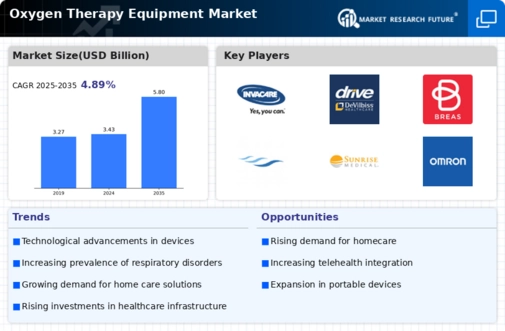
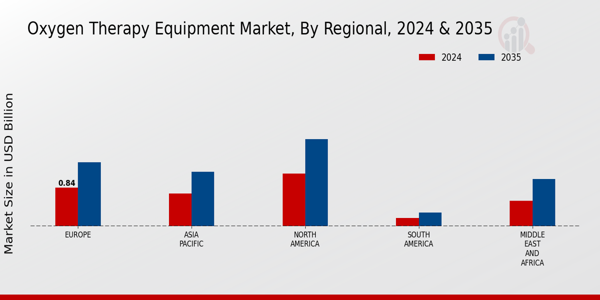
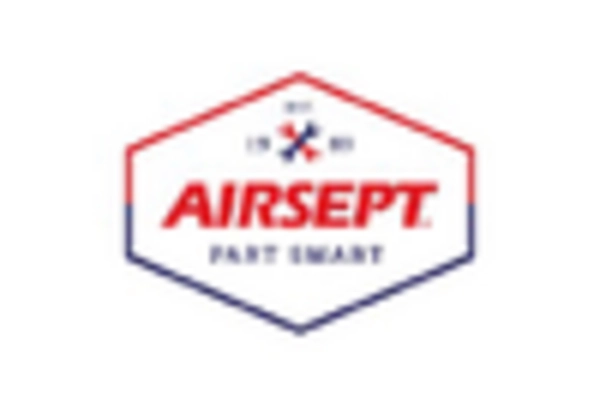



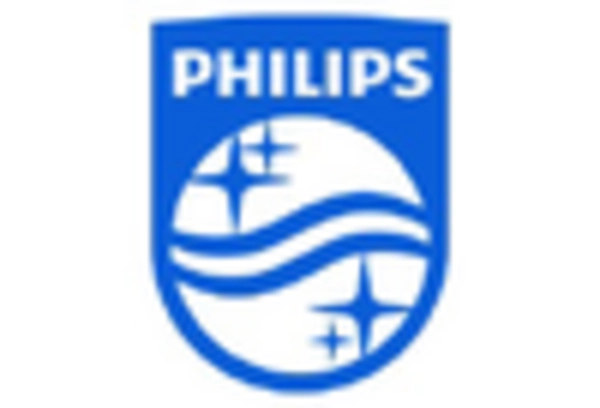
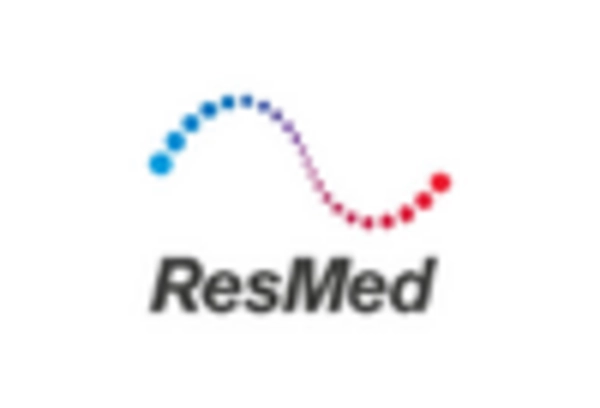

Leave a Comment